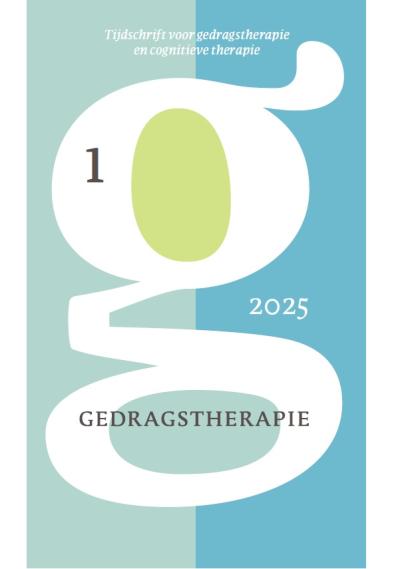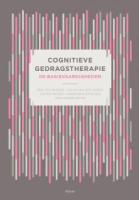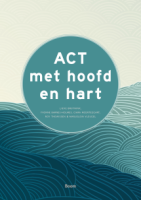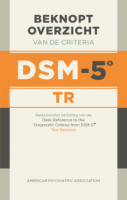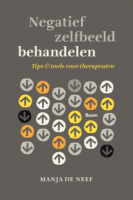Inhoud
Het bitterzoete online soelaas: behandeling van de drang naar kinderpornografie
Literatuur
- American Psychiatric Association (1994). Diagnostic and Statistical Manual of Mental Disorders, fourth edition. Washington, DC: American Psychiatric Association.
- Babchishin, K.M., Hanson, R.K., & Hermann, C.A. (2011). The characteristics of online sex offenders: a meta-analysis. Sexual Abuse: A Journal of Research and Treatment, 23(1), 92-123.
- Bates, A., & Metcalf, C. (2007). A psychometric comparison of internet and non-internet sex offenders from a community treatment sample. Journal of Sexual Aggression, 13(1), 11-20.
- Beck, A.T., Steer, R.A., & Brown, G.K. (2002). Beck Depression Inventory-II-NL. Handleiding. De Nederlandse versie van de Beck Depression Inventory, 2nd edition. (A.J.W. van der Does, vert. en bew.) Lisse: Swets TestPublishers
- Cooper, A. (1998). Sexuality and the internet: surfing into a new millennium. Cyberpsychology and Behavior, 1(2), 187-193.
- Cortoni, F., & Marshall, W.L. (2001). Sex as a coping strategy and its relationship to juvenile sexual history and intimacy in sexual offenders. Sexual Abuse: A Journal of Research and Treatment, 13, 27-43.
- Cosyns, P., De Doncker, D., Oostvogels, I., Mormont, C. & Cornet, U.P. (1999). Handboek voor penitentiaire begeleiding van seksuele delinquenten. Brussel: Ministerie van Justitie.
- Cosyns, P., Van Hunsel, F., & Dailliet, A. (2003). Impulsiviteit, agressiviteit en parafilieën. In: M. Dierick, M. Ansseau, H. D'Haenen, J. Peuskens & P. Linkowski (Eds.), Handboek Psychofarmacotherapie (pp. 339-362). Gent: Academia Press.
- Delmonico, D.L., & Griffin, E.J. (2005). Sex offenders online – what clinicians need to know. In: B.K. Schwartz (Ed.), The sex offender. Issues in assessment, treatment and supervision of adult and juvenile populations (pp. 4-1 – 4-25). Kingston: Civic Research Institute.
- De Raedt, R., & Schacht, R. (2003). Een empirisch model voor probleemidentificatie binnen het gedragstherapeutisch proces. Gedragstherapie, 36, 197-222.
- Doren, D.M. (2004). Toward a multidimensional model for sexual recidivism risk. Journal of Interpersonal Violence, 19(8), 835-856.
- Endrass, J., Urbaniok, F., Hammermeister, L.C., Benz, C., Elbert, T., Laubacher, A., & Rossegger, A. (2009). The consumption of internet child pornography and violent and sex offending. BMC Psychiatry, 9(43).
- Finkelhor, D., & Araij, S. (1986). Explanations of pedophilia: a four factor model. The Journal of Sex Research, 22, 145-161.
- George, W.H., & Marlatt, G.A. (1989). Introduction. In: Laws, D.R. (Ed.), Relapse prevention with sex offenders (pp. 1-31). New York: Guilford Press.
- Glasgow, D. (2010). The potential of digital evidence to contribute to risk assessment of internet offenders. Journal of Sexual Aggression, 16(1), 87-106.
- Hall, G.C.N., & Hirschman, R. (1992). Sexual aggression against children. A conceptual perspective of etiology. Criminal Justice and Behavior, 19(1), 8-23.
- Hanson, R.K., & Babchishin, K.M. (2009). How should we advance our knowledge of risk assessment for internet sexual offenders? Retrieved from http://www.iprc.unc.edu/ G8/Karl_Hanson_3.6.09.doc.
- Henry, O., Mandeville-Norden, R., Hayes, E., & Egan, V. (2010). Do internet-based sexual offenders reduce to normal, inadequate and deviant groups? Journal of Sexual Aggression, 16(1), 33-46.
- Hermans, D., Eelen, P., & Orlemans, H. (2007). Inleiding tot de gedragstherapie. Houten: Bohn Stafleu van Loghum.
- Jacobson, N.S., & Truax, P. (1991). Clinical significance: a statistical approach to defining meaningful change in psychotherapy research. Journal of Consulting and Clinical Psychology, 59, 12-19.
- Marshall, W.L., & Barbaree, H.E. (1990). An integrated theory of the etiology of sex offending. In: W.L. Marshall, D.R. Laws & H.E. Barbaree (Eds.), Handbook of sexual assault. Issues, theories and treatment of the offender (pp. 257-275). New York: Plenum.
- Middleton, D., Mandeville-Norden, R., & Hayes, E. (2009). Does treatment work with internet sex offenders? Emerging findings from the Internet Sex Offender Treatment Programme (i-SOTP). Journal of Sexual Aggression, 15(1), 5-19.
- Prochaska, J.O., & DiClemente, C.C. (1983). Stages and processes of self-change of smoking : toward an integrative model of change. Journal of Consulting and Clinical Psychology, 51, 390-395.
- Prochaska, J.O., & Levesque, D.A. (2002). Enhancing motivation of offenders at each stage of change and phase of therapy. In: M. McMurran (Ed.), Motivating offenders to change. A guide to enhancing engagement in therapy. Chichester: John Wiley & Sons Ltd.
- Quayle, E., & Taylor, M. (2003). Model of problematic internet use in people with a sexual interest in children. Cyberpsychology and Behavior, 6(1), 93-106.
- Quayle, E., Vaughan, M., & Taylor, M. (2006). Sex offenders, internet child abuse images and emotional avoidance: the importance of values. Aggression and Violent Behavior, 11, 1-11. Schreurs, P.J.G., & Willige, G. Van de (1988). Omgaan met problemen en gebeurtenissen: de Utrechtse Copinglijst (UCL). Lisse: Swets & Zeitlinger.
- Seto, M.C., Cantor, J.M., & Blanchard, R. (2006). Child pornography offenses are a valid diagnostic indicator of pedophilia. Journal of Abnormal Psychology, 115(3), 610-615. Seto, M.C., & Eke, A.W. (2005). The criminal histories and later offending of child pornography offenders. Sexual Abuse: A Journal of Research and Treatment, 17, 201-210.
- Seto, M.C., Hanson, R.K., & Babchishin, K.M. (2011). Contact sexual offending by men with online sexual offenses. Sexual Abuse: A Journal of Research and Treatment, 23(1), 124-145.
- Van Broekhoven, T. (2001). Alcoholverslaving. Houten: Bohn Stafleu Van Loghum.
- Ward, T., & Stewart, C. (2003). The Good Lives Model of offender rehabilitation of sexu al offenders. In T. Ward, D.R. Laws & S.M. Hudson (Eds.), Sexual Deviance: Issues and Controversies in Sexual Deviance (pp. 3-20). London: Sage.
- Webb, L., Craissati, J., & Keen, S. (2007). Characteristics of internet child pornography offenders: a comparison with child molesters. Sexual Abuse: A Journal of Research and Treatment, 19, 449-465.
 © 2009-2025 Uitgeverij Boom Amsterdam
© 2009-2025 Uitgeverij Boom Amsterdam
De artikelen uit de (online)tijdschriften van Uitgeverij Boom zijn auteursrechtelijk beschermd. U kunt er natuurlijk uit citeren (voorzien van een bronvermelding) maar voor reproductie in welke vorm dan ook moet toestemming aan de uitgever worden gevraagd:
Behoudens de in of krachtens de Auteurswet van 1912 gestelde uitzonderingen mag niets uit deze uitgave worden verveelvoudigd, opgeslagen in een geautomatiseerd gegevensbestand, of openbaar gemaakt, in enige vorm of op enige wijze, hetzij elektronisch, mechanisch door fotokopieën, opnamen of enig andere manier, zonder voorafgaande schriftelijke toestemming van de uitgever.
Voor zover het maken van kopieën uit deze uitgave is toegestaan op grond van artikelen 16h t/m 16m Auteurswet 1912 jo. Besluit van 27 november 2002, Stb 575, dient men de daarvoor wettelijk verschuldigde vergoeding te voldoen aan de Stichting Reprorecht te Hoofddorp (postbus 3060, 2130 KB, www.reprorecht.nl) of contact op te nemen met de uitgever voor het treffen van een rechtstreekse regeling in de zin van art. 16l, vijfde lid, Auteurswet 1912.
Voor het overnemen van gedeelte(n) uit deze uitgave in bloemlezingen, readers en andere compilatiewerken (artikel 16, Auteurswet 1912) kan men zich wenden tot de Stichting PRO (Stichting Publicatie- en Reproductierechten, postbus 3060, 2130 KB Hoofddorp, www.cedar.nl/pro).
No part of this book may be reproduced in any way whatsoever without the written permission of the publisher.
Inloggen VGCt en VVGT
Leden van de VGCt en de VVGT loggen in via de site van hun vereniging. Als u op die site bent ingelogd als lid, vindt u daar een button naar het Tijdschrift voor Gedragstherapie.
English
Behavioral Therapy: Journal for Behavioral Therapy and Cognitive Therapy ISSN 0167-7454
Information in English can be found here.



